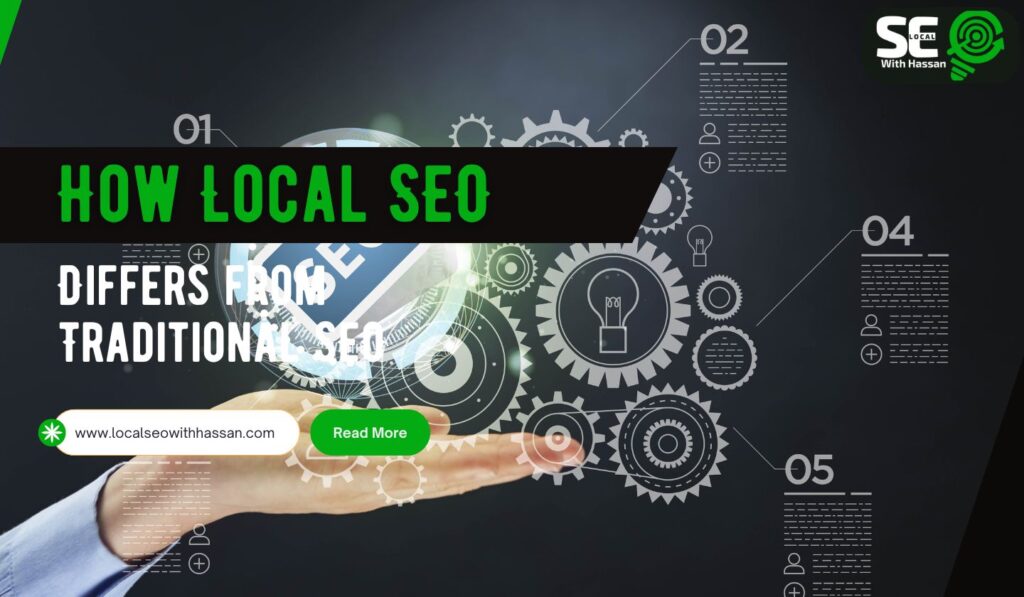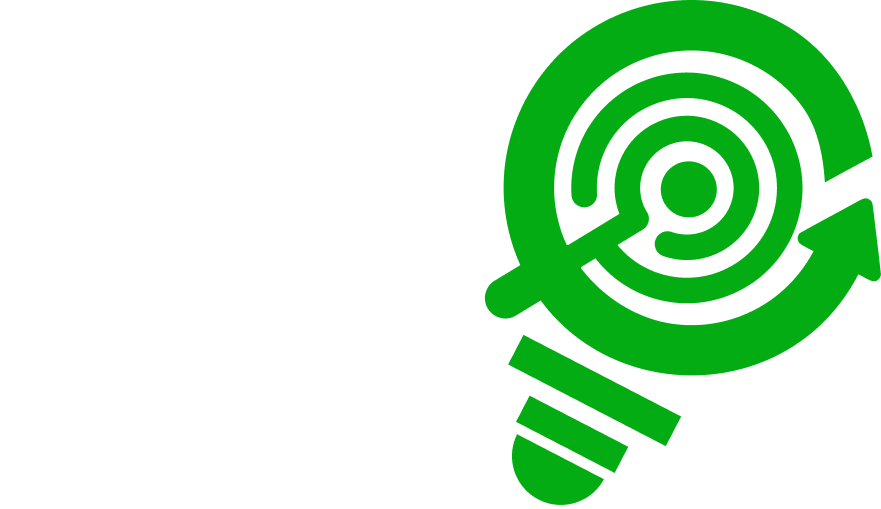In the ever-changing world of digital marketing, Search Engine Optimization (SEO) plays a critical role in driving visibility, traffic, and revenue. However, not all SEO is created equal. Businesses targeting local customers need a different approach compared to companies aiming for a global audience.
That’s where Local SEO comes in. While traditional SEO focuses on improving visibility on a national or global scale, Local SEO zeroes in on increasing search visibility within a specific geographic area.
In this article, we’ll break down:
✔ What Local SEO is and how it works
✔ What Traditional SEO is and its scope
✔ The key differences between Local SEO and Traditional SEO
✔ Why Local SEO is crucial for small businesses
✔ Actionable tips to implement Local SEO
What is Local SEO?
Local SEO (Local Search Engine Optimization) is the process of optimizing your online presence to attract more business from relevant local searches. These searches happen on Google and other search engines when people look for products and services “near me” or in a specific location.
For example:
- “Laundry service near me”
- “Best hair salon in Chicago”
- “Plumber in Los Angeles”
Local SEO involves optimizing your Google Business Profile (GBP), building local citations, earning local backlinks, and using localized keywords.
Goal: To ensure your business shows up in Google’s Local Pack (Map Pack) and local search results when customers nearby are looking for your services.
What is Traditional SEO
Traditional SEO refers to the process of optimizing a website so that it ranks higher on organic search results across a wide geographic area (national or international).
For example:
- “Best roofing materials”
- “How to fix a leaking pipe”
- “Online shoe stores”
Traditional SEO focuses on:
- Website optimization (speed, mobile-friendliness, UX)
- High-quality content creation
- Backlink building for authority
- On-page SEO (meta tags, keywords, internal linking)
Goal: To capture traffic from non-local searches and build authority on a broad scale.
The Key Differences Between Local SEO and Traditional SEO
Let’s break down the main differences between the two strategies:
1. Target Audience and Intent
- Local SEO: Targets customers within a specific geographic area. Focuses on people searching for businesses near them with high purchase intent.
- Traditional SEO: Targets a wider audience, often without geographic limitations. Focused on informational or transactional queries.
Example:
- Local SEO query: “Car repair shop in Miami”
- Traditional SEO query: “How to fix a flat tire”
2. Search Results Format
- Local SEO: Displays results in Google’s Local Pack (map with 3 businesses), along with localized organic results.
- Traditional SEO: Displays results as standard organic listings without maps.
Did You Know?
According to Google, 46% of all searches have a local intent, making the Local Pack a prime real estate for small businesses.
3. Keyword Strategy
- Local SEO: Uses geo-targeted keywords like “Best dentist in Dallas” or “coffee shop near me.”
- Traditional SEO: Uses broad, non-geographic keywords like “best coffee beans” or “teeth whitening tips.”
4. Ranking Factors
Local SEO Ranking Factors Include:
- Google Business Profile optimization
- NAP consistency (Name, Address, Phone) across directories
- Local reviews and ratings
- Proximity to the searcher
- Local backlinks
Traditional SEO Ranking Factors Include:
- High-quality content
- Domain authority
- Technical SEO (site speed, structure)
- Backlinks from high-authority sites
5. Tools and Platforms
- Local SEO Tools: Google Business Profile, BrightLocal, Whitespark, Moz Local
- Traditional SEO Tools: Ahrefs, SEMrush, Moz Pro, Google Search Console
6. Conversion Path
- Local SEO: Usually leads to calls, store visits, or bookings. Customers are ready to buy.
- Traditional SEO: Often focuses on content consumption, lead generation, or e-commerce transactions.
Why Local SEO Matters More Than Ever
If you own a brick-and-mortar business, service-area business, or any company targeting a specific region, Local SEO is not optional—it’s essential.
Key Statistics:
- 78% of local mobile searches result in offline purchases (Source: Google)
- 97% of consumers learn about local companies online
- Businesses in the Local Pack get 5X more clicks than organic listings
Benefits of Local SEO Over Traditional SEO for Local Businesses
✔ Faster Results: Easier to rank locally than nationally
✔ Higher ROI: Brings in customers ready to purchase
✔ Better Visibility on Mobile: Most local searches happen on smartphones
✔ Builds Community Trust: Local reviews and proximity give businesses credibility
Actionable Local SEO Tips for Small Businesses
Here’s how to implement Local SEO effectively:
1. Optimize Your Google Business Profile
- Complete all details: Name, Address, Phone (NAP), business hours, services
- Upload high-quality photos
- Add relevant keywords in description
- Post updates regularly
2. Build Local Citations
- Submit your business info to directories like Yelp, YellowPages, and niche platforms
- Ensure NAP consistency everywhere
3. Get More Local Reviews
- Encourage happy customers to leave reviews on Google
- Respond to all reviews professionally
4. Use Local Keywords
- Include your city or neighborhood in titles, headings, and meta descriptions
5. Create Local Content
- Blog about local events, news, and tips
- Highlight community involvement
6. Earn Local Backlinks
- Partner with local blogs, news sites, and influencers for mentions
When to Focus on Traditional SEO
If your business sells digital products, operates nationally, or has an e-commerce model, traditional SEO should be your primary strategy. However, combining Local SEO + Traditional SEO offers the best of both worlds for businesses that serve both local and national audiences.
1. What is the main difference between Local SEO and Traditional SEO?
The main difference is the target audience. Local SEO focuses on improving a business’s visibility for location-based searches (e.g., “hair salon near me”), while Traditional SEO aims to rank for broader or national keywords without geographic intent.
2. Why is Local SEO important for small businesses?
Local SEO helps small businesses appear in the Google Map Pack and local search results, attracting nearby customers who are ready to buy. This increases calls, foot traffic, and overall revenue without the cost of paid ads.
3. How does Google determine local search rankings?
Google uses three main factors: Relevance, Distance, and Prominence. This means your business should match the user’s search intent, be located near the searcher, and have strong local authority through reviews, citations, and optimized profiles.
4. Can I use Local SEO and Traditional SEO together?
Yes! Combining both strategies works best for businesses that serve local customers but also want to attract a wider audience. For example, a local hair salon can optimize for “hair salon near me” (Local SEO) and publish blogs like “Top Hair Care Tips” (Traditional SEO).
5. How long does it take to see results from Local SEO?
Local SEO results usually appear within 4–8 weeks, depending on competition, optimization quality, and consistency in managing your Google Business Profile, citations, and reviews.
6. Do I need a website for Local SEO?
While you can show up in local results with just a Google Business Profile, having a website greatly improves your chances of ranking higher. It adds credibility, helps with keyword optimization, and attracts organic traffic.
Final Thoughts
Local SEO and Traditional SEO share the same foundation but have different goals, strategies, and ranking factors. If you’re a local business like a hair salon, laundry service, or plumber, Local SEO is the game-changer that can put you ahead of competitors.
Want your business to dominate the Google Map Pack and attract more local customers?
I’m a Local SEO Specialist dedicated to helping businesses like yours rank higher, get more calls, and boost revenue without wasting money on ads.



